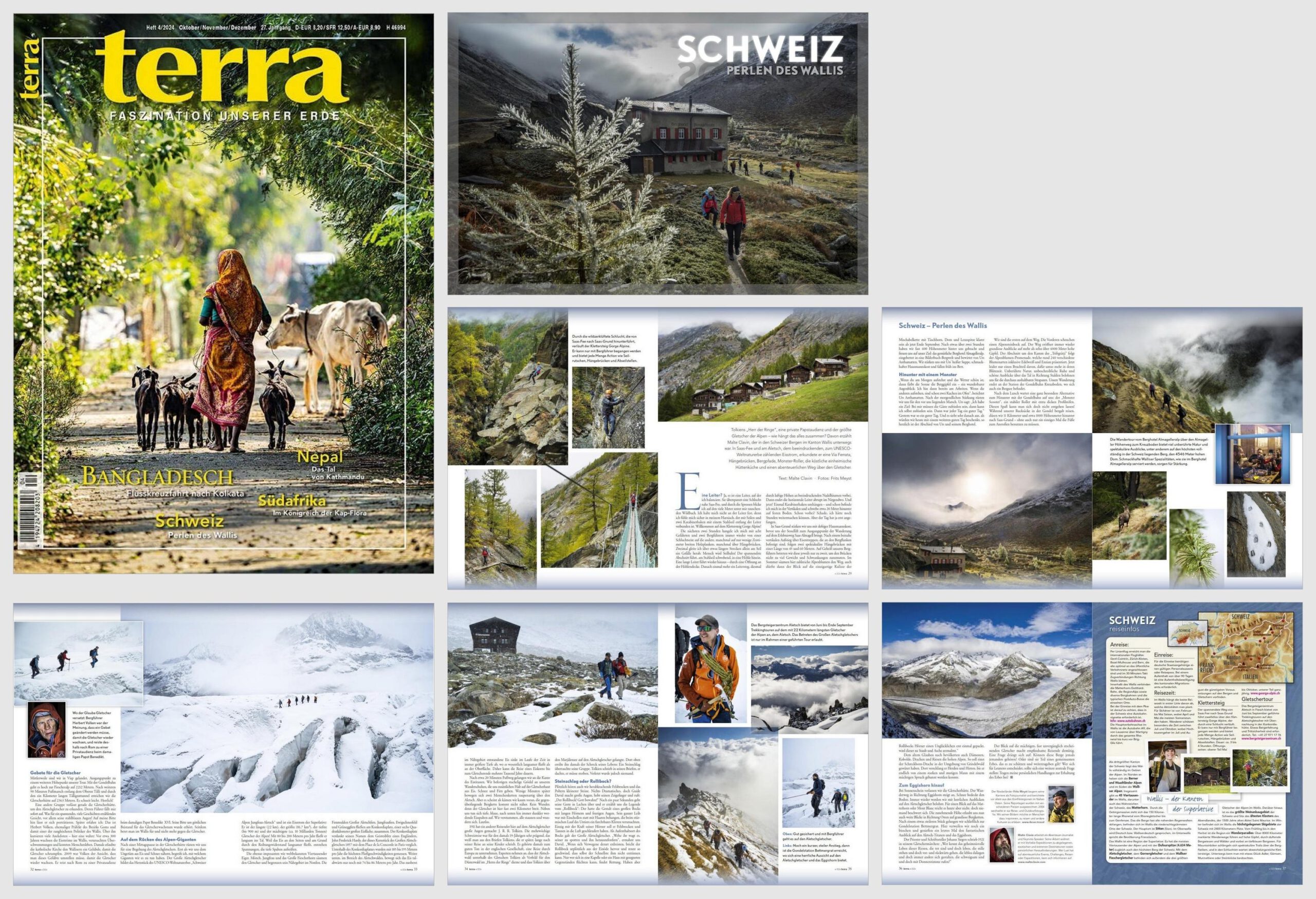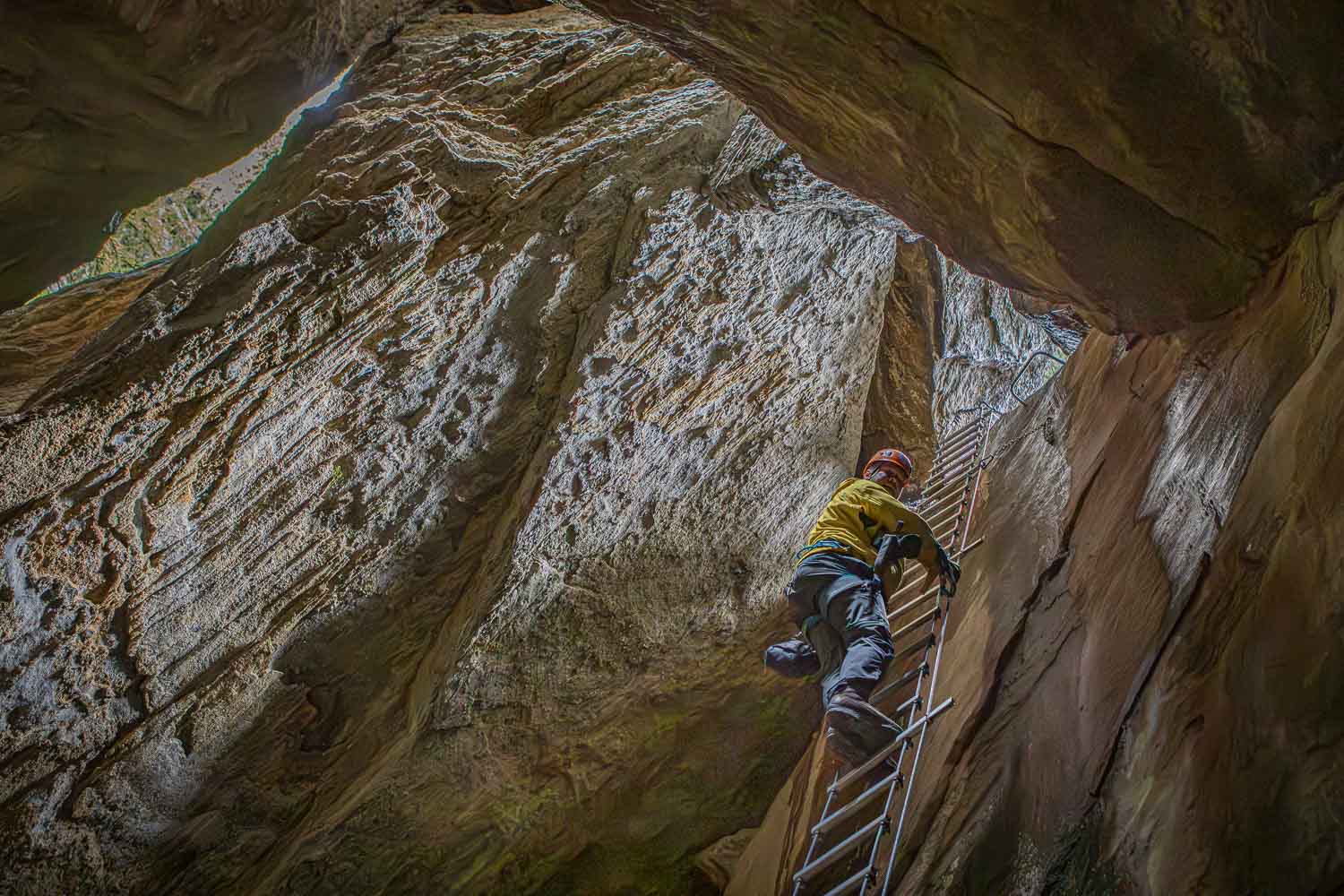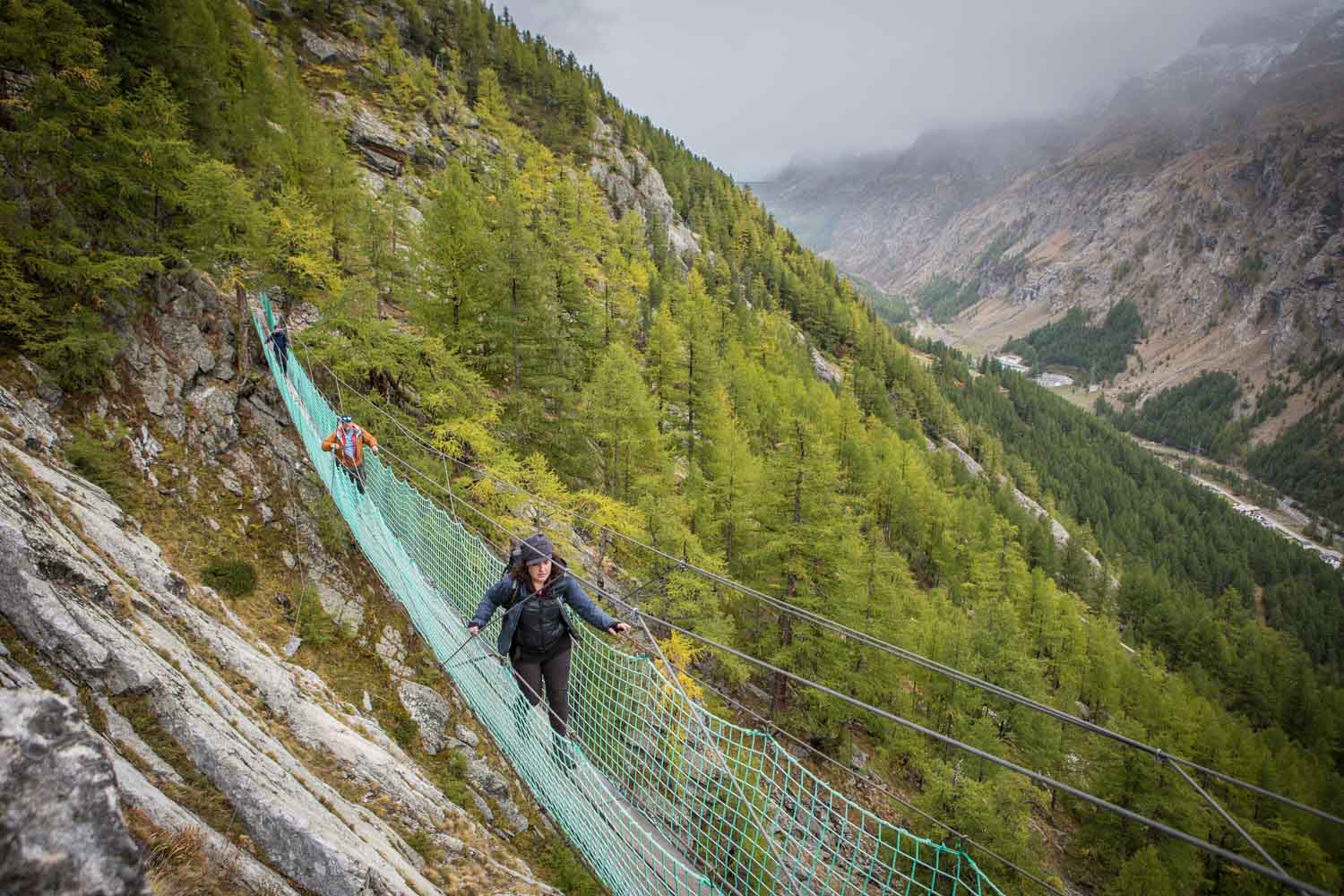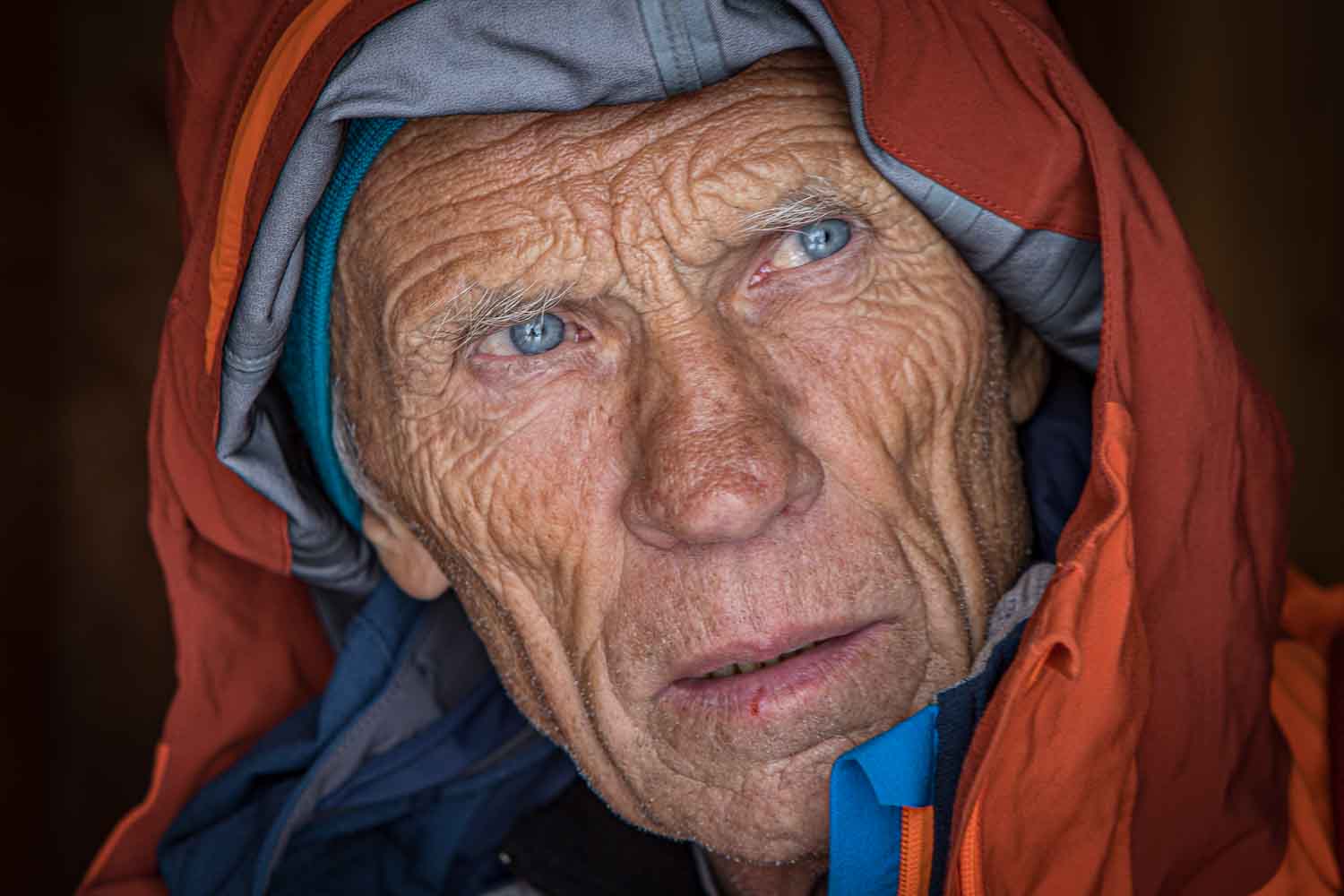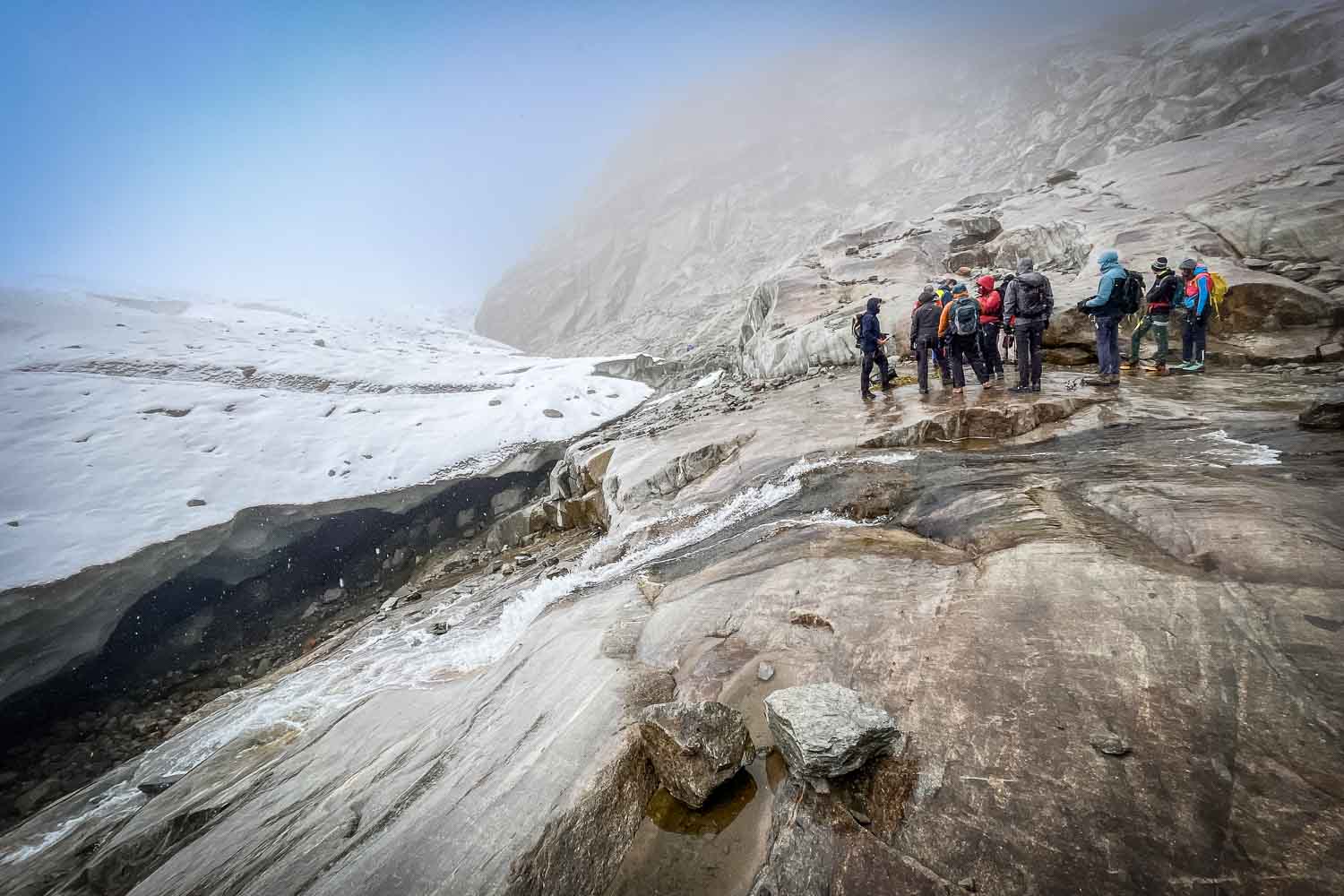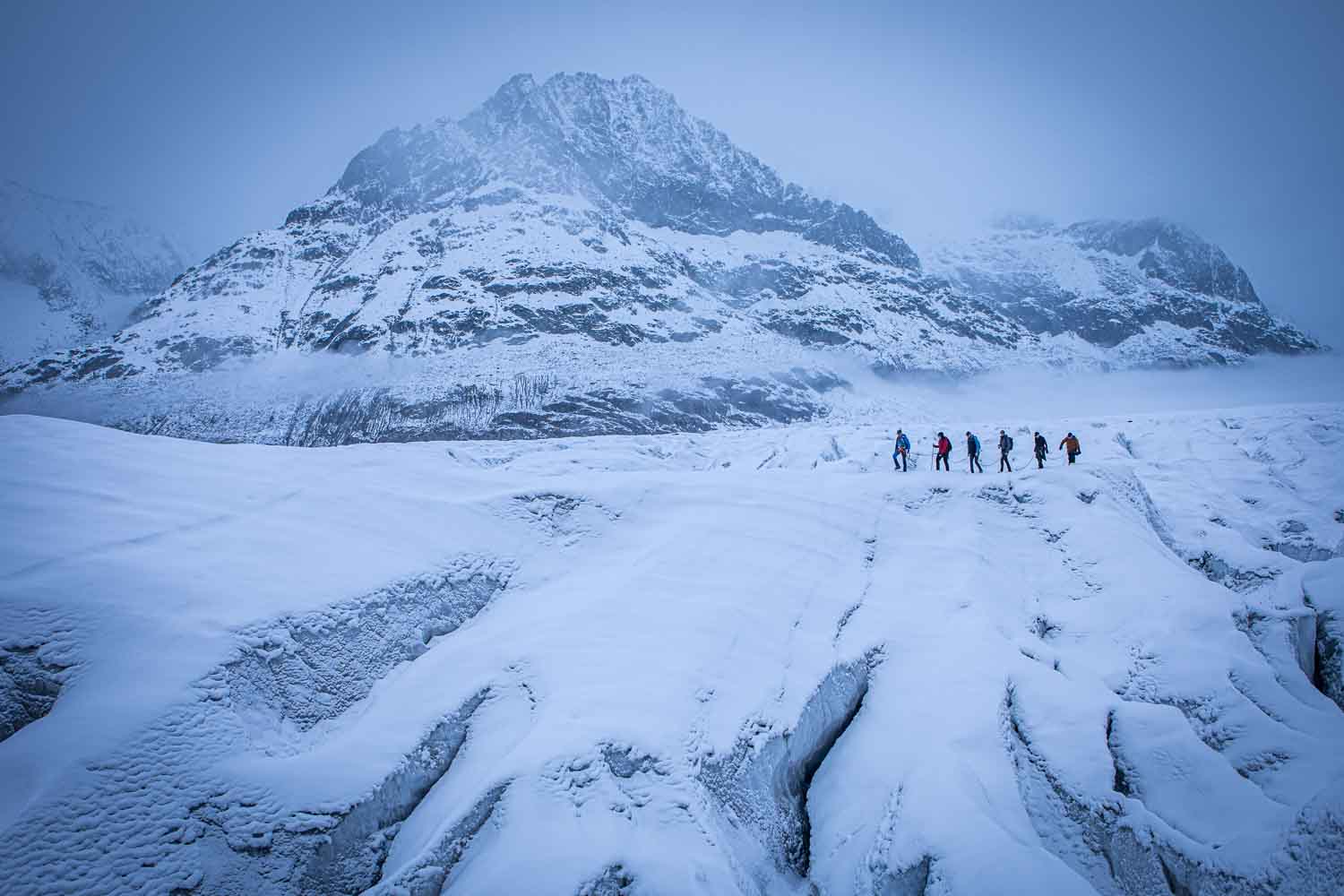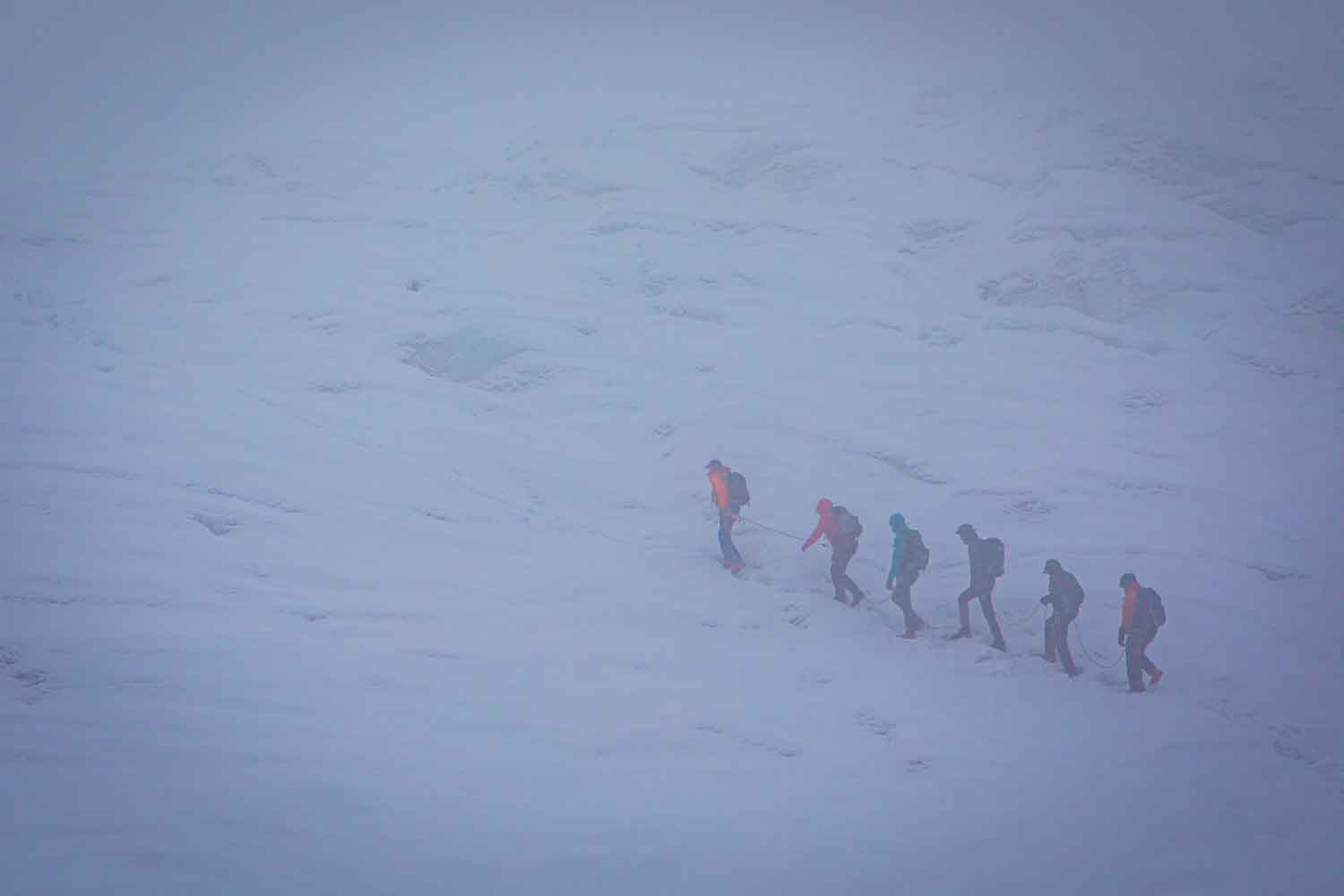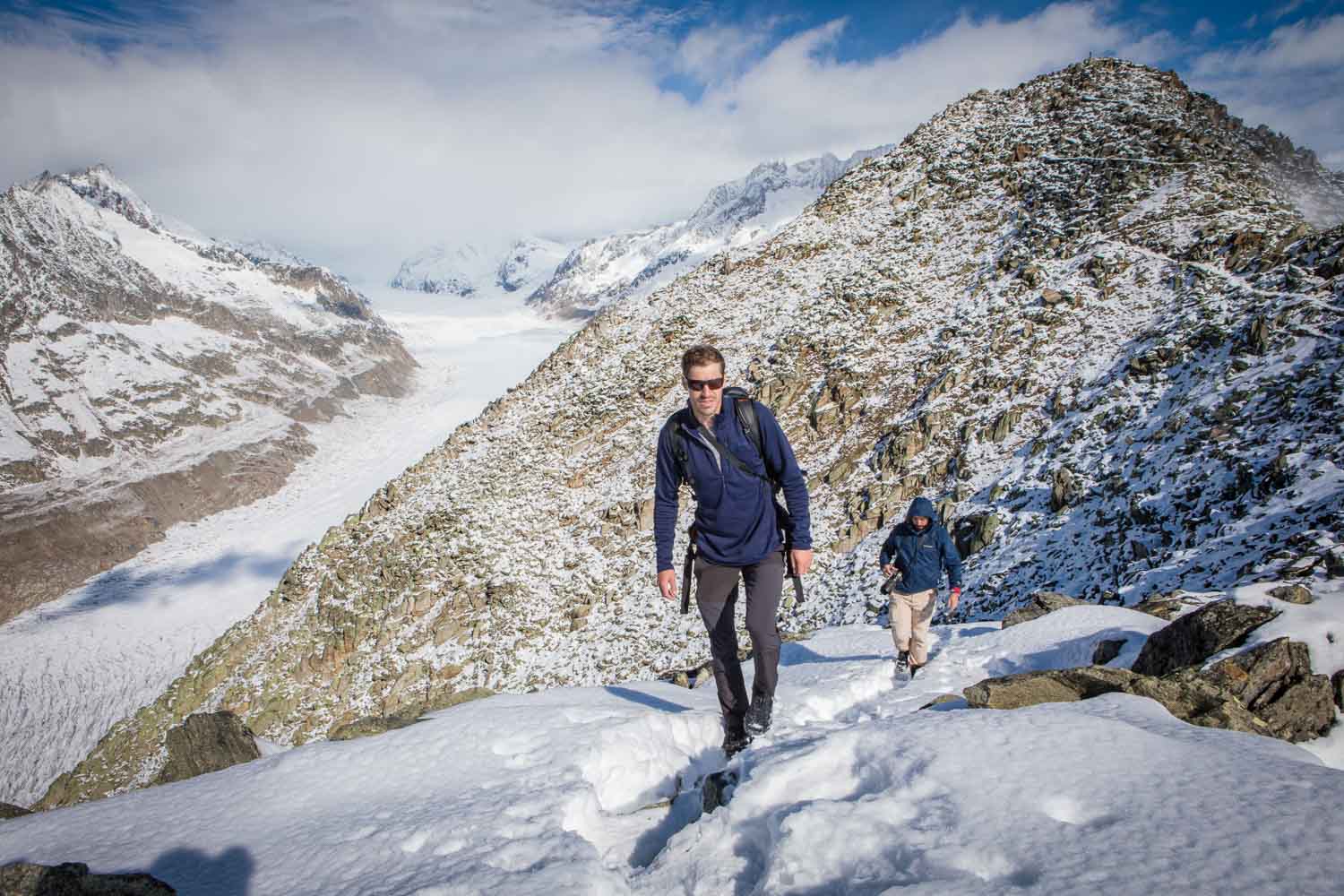Published in:

Germany’s biggest nature travel magazine
12 pages| Text & photographs
A ladder? Yes, it’s a ladder I’m balancing on, but I’m not holding on to it. Because it spans a gorge near Saas-Fee, I can see many meters down to the rushing torrent below me through the rungs. I feel safe because I’m wearing a harness connected to a steel cable along the ladder with ropes and two snap hooks. Welcome to the via ferrata Gorge Alpine!
Abruptly, the horizontal ladder ends nowhere
For the next two hours, with eight companions and two guides, I repeatedly shimmy from one side of the gorge to the other, sometimes on wooden planks only a few centimeters wide, sometimes over suspension bridges. Twice I slide down a slope alone on the rope over somewhat longer stretches. Man becomes a ropeway! The most exciting section leads into a cave suspended on steel. A long ladder leads out again – through an opening in the cave ceiling.
Gorge Alpine via ferrata: A long ladder leads out of the cave – through an opening in the cave ceiling.
Then once again a ladder walkway through airy heights past impressive coniferous trees. Abruptly, the horizontal ladder ends nowhere. And now? Once I hang on to the karabiner, I am in the vertical and float about 20 meters down to the solid ground. Already over? Too bad, I could have gone on for hours. But the day has only just begun.
Two spectacular suspension bridges follow, 45m and 60m long
In Saas Grund, we fortify ourselves with hearty home cooking before the chairlift takes us to the starting point of the Saas-Almagell adventure trail. After an almost vertical ascent via iron stairs clinging to the mountain flanks, two spectacular suspension bridges follow, 45m and 60m long. At the behest of our guide, we only walk on them in pairs so as not to put too much weight and sway on the bridges.
This spectacular 60 metre long suspension bridge on the Saas-Almagell adventure trail must not be overloaded. You should therefore only cross it in pairs.
In summer, numerous alpine flowers line the path, and the view of the unique backdrop of the Mischabel chain with Täschhorn, Dom, and Lenzspitze should be clearer then than it is now. After a little over two hours, we have covered almost 400 meters in altitude, and we can see our destination: the cozy Almagellerhütte, nestled in the most beautiful mountain scenery, hosted by Urs Anthamatten. We fortify ourselves with Urs’ hot soup and tasty home cooking and fall into bed early.
Unspoiled nature, indescribable tranquillity, and beautiful views
Down with a monster
“When you get up in the morning, and the weather is nice, the sun colors the mountain peaks. It’s a wonderful moment. I’m already working then, and when the others get up, there are already two cakes in the oven,” says Urs Anthamatten. Unfortunately, these cakes are not available to us early breakfast guests. But that doesn’t matter. After our morning refreshment, we prepare for the march ahead.
On a monster scooter, I hurtle 11 kilometres and 1,000 metres in altitude down to Saas Grund, interrupted only by a few photo stops like this one.
We are the first on the trail. The ones in front scare up an Alpine ibex. The path repeatedly opens up magnificent views of more than ten peaks over 4,000 meters high. The section around “Triftgrätji” follows the Alpine Flower Promenade, which presents around 240 different species of flowers including edelweiss and gentian. Now, unfortunately, only a fraction of them, but all the more so when they bloom. Unspoiled nature, indescribable tranquillity, and beautiful views over the valley towards Stalden reward us for the endurable exertions. Our hike ends at the Kreuzboden cable car station, with a mountain lake.
You can’t miss that kind of fun!
After lunch, a unique alternative to the cable car awaits us: the ‘Monster Scooter’! A manual scooter with thick tread tires! You can’t miss that kind of fun! While our backpacks travel down in the gondola, we jet 11 kilometers and about 1,000 meters in altitude down to Saas Grund – without having to use our feet to bump into it even once.
There are many anecdotes about him: Herbert Volken, mountain guide, mountaineer and former prefect, the highest-ranking politician in Valais.
On the back of the Alpine giant
In the meantime, we have landed in Visp, starting point to another highlight we should not yet suspect. The cable car takes us up to Fiescheralp at 2,212 meters. After another 90 minutes walk along the Obere Tälli and through the one-kilometer-long Tälligrattunnel, we reach the Gletscherhütte at 2,363 meters. It is snowing lightly. Wonderful!
What an exciting, story-telling face
A group is just leaving the glacier hut to explore the Aletsch Glacier. Their guide immediately catches my eye. What an exciting, story-telling face, especially his steel-blue eyes! At my request, he has his portrait taken. Later I learn that this is Herbert Volken, former prefect and thus the highest-ranking politician in Valais. There are many anecdotes about him. Here is a true one.
Last safety briefing before we explore the Aletsch Glacier.
About 300 years ago, the ice grew in Valais, causing floods and costing human lives. At that time, the church allowed a vow to be made so that the glaciers would shrink. In 2009, Volken felt that prayer had to be changed so that the glaciers would grow again. He traveled to Rome for a private audience with the then Pope Benedict. His request for divine assistance for glacier growth was increased. Since then, people in Valais and beyond have been praying ‘the other way round.’
It is the longest, the largest, the thickest, the most powerful
After the lunch break in the glacier hut, we gear up for an ascent of the Aletsch Glacier. Only when we get closer to the monster of ice and snow do I realize what a giant we are dealing with.
The Great Aletsch Glacier forms the heart of the UNESCO World Heritage Site “Swiss Alps Jungfrau-Aletsch” and is an ice stream of superlatives: it is the longest (22.6 km), the largest (81.7 km), the thickest (up to 900 m) and the most powerful (approx. 10 billion tonnes) glacier in the Alps! It flows slowly down into the valley at 80 to 200 meters per year. Because the ice flows more slowly on the sides and at the bottom due to frictional resistance, tensions arise that tear open deep crevasses.
The ice of the Aletsch Glacier moves down the valley at a rate of 74 to 86 metres per year.
The imposing and world-famous four-thousand-meter peaks Eiger, Mönch, Jungfrau, and the Great Fiescherhorn line the glacier and limit its nourishing area in the north. The firn troughs Großer Aletschfirn, Jungfraufirn, Ewigschneefäld, and Grüneggfirn (from west to east) converge at the Konkordiaplatz, a six-square-kilometer ice surface. Konkordiaplatz owes its name to the brainwave of an Englishman, J. F. Hardy, who compared this core piece of the Great Aletsch Glacier to the Place de la Concorde in Paris.
The journey of an ice grain to the end of the glacier can take several thousand years
Below the Place de la Concordia, the highest flow rates were measured at 185 to 195 meters per year. Further down, in the area of the Aletsch forest, the ice moves down the valley at only 74 to 86 meters per year. The ice formed at the top of the nutrient zone sinks over time to ever greater depths, where it flows much more slowly than at the surface. Therefore, the journey of an ice grain to the end of the glacier can take several thousand years.
Pure enthusiasm over – and on – the Aletsch Glacier: Marco Barneveld (left), glacier guide David Kestens (right) and his son (centre).
After about 20 minutes of walking, we reach the edge of the ice titan. We attach spiky grödels to our hiking boots, which give extra grip on the glacier skin of ice, snow, and firn.
A few minutes later, two human chains move caterpillar-like on the Aletsch. It seems that we are hardly making any progress; the opposite mountain range doesn’t seem to be getting any closer. No wonder the glacier is almost two kilometers wide here.
In 1911, another traveler made big eyes here on the Aletsch Glacier
Next to us, deep ice crevasses open up, becoming darker and darker towards the bottom. Voices fade away, everything is amazed and wondering. Silently.
In 1911, another traveler made big eyes here on the Aletsch Glacier: J. R. R. Tolkien. The trip to Switzerland, which lasted several weeks, was very formative for the then nineteen-year-old, as we know from Tolkien’s letters to his children, which he wrote long after his trip. At the time, it was good manners in English society to take a journey through Europe.
Master of superlatives: the Great Aletsch Glacier is the longest (22.6 km), largest (81.7 km) and thickest (up to 900 m) glacier in the Alps.
Experts assume that the Aletsch forest below the glacier served Tolkien as a model for the Bleak Forest in Lord of the Rings and that Tolkien reached the Aletsch glacier via Lake Marjälen. On the glacier, the horror of his life befell him: a rockfall took his group by surprise. Tolkien wrote in his letters that he thought he would die. However, no one was injured.
“The Rollibock. Beware!”
Rockfall or Rollibock?
Suddenly we also hear crashing boulders and smaller stones. Nothing dramatic. But Guide David’s eyes widen; he raises his index finger and warns: “The Rollibock. Beware!” After a few seconds, his gesture turns into joyful laughter. David tells us about the legend of “Rollibock”: it had the shape of a giant goat with long horns and fiery eyes.
Suddenly we also hear crashing boulders and smaller stones. Nothing dramatic. But Guide David’s eyes widen; he raises his index finger and warns: “The Rollibock. Beware!”
His whole body was covered with ice floes instead of hair. When the beast ran, they made a terrible clatter. It is only said to have hurled stones and fir trees into the air with the power of its horns. The Great Aletsch Glacier was said to be the goat’s abode.
David continues: “When bold men dared to mock him and challenge him – don’t you dare,” David laughs now, “he would suddenly burst out of the wasteland and run so fast that even the fastest could not escape him. Only those who could take refuge in a chapel or a house with sacred objects found rescue. But once Rollibocks had seized an unfortunate person, he was crushed to dust and ashes.”
There he devoured herds and shepherds
According to ancient beliefs, demons, goblins, dragons, and giants also populated the high Alps. The Schreckhorn dragon is said to have raged in the neighborhood of Grindelwald. There he devoured herds and shepherds until a strong and clever man finally banished him.
Brendon and Hassen return from their Eggishorn summit exploration (right), on the left the Aletsch Glacier stretches up to Konkordia, a six-square-kilometre expanse of ice.
Up the Eggishorn
We leave the glacier hut in the sunshine. The trail climbs, and snow covers the ground. Again and again, we are rewarded with magnificent views of the Aletsch Glacier. Usually, you can see the Matterhorn and Mont Blanc on a clear day. But not today. The increasing altitude allows expansive views of majestic mountain ranges to the east. After a last, somewhat steeper stretch, we reach the Bettmergrat gondola station. Here we linger, enjoying the magnificent view of the Aletschtitanen and the Eggishorn one last time.
Can these mountains ever belong to anyone?
Johann Siegen wrote in 1921 in his Gletschermärchen: “Who knows the mysterious life of these giants that are dead and yet live, that stand still and yet go backwards and forwards, that lie lifeless and yet always change their shape, that are silent and yet calls out with a voice of thunder […] ?”
The view of mighty, almost imperishable glaciers makes sensitive travelers humble. A question suggests itself: Can these mountains ever belong to anyone? Or are they part of a common heritage to be protected and passed on? Those who choose the latter should ask themselves another critical question: Do my actions contribute to the promotion of the heritage?
Read now:
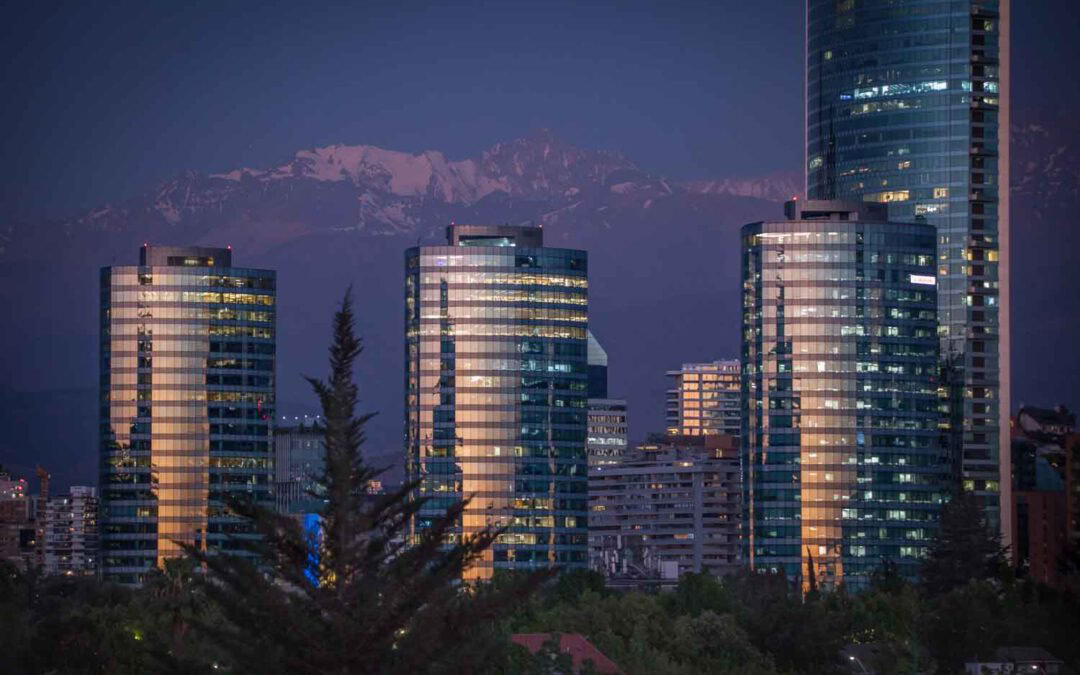
Adventures in the world's longest country
Chile – Colourful harbours, exhilarating nature
24 Min.Valparaiso is world-famous for its colourful houses and historic lifts, the ‘Ascensores’. Situated on the Pacific Ocean, the port city with its colourful street art and exciting architecture turns every visitor’s head – in the truest sense of the word. In Chile’s Conguillio National Park, the volcanic peaks, the magnificent araucarias and the condors gliding through the sky are sure to turn at least as many heads.
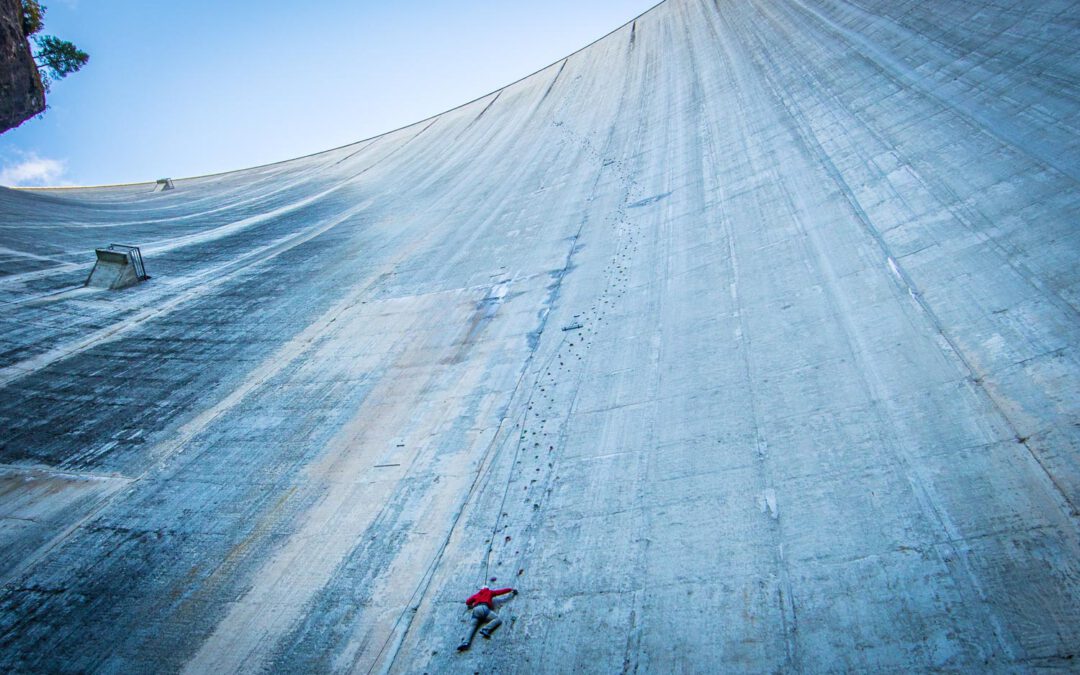
Luzzone Dam, Switzerland
Climbing the highest artificial route in the world
2 Min.Today, I climbed on the highest artificial climbing wall in the world: Luzzone Dam, Switzerland: 165 meters.
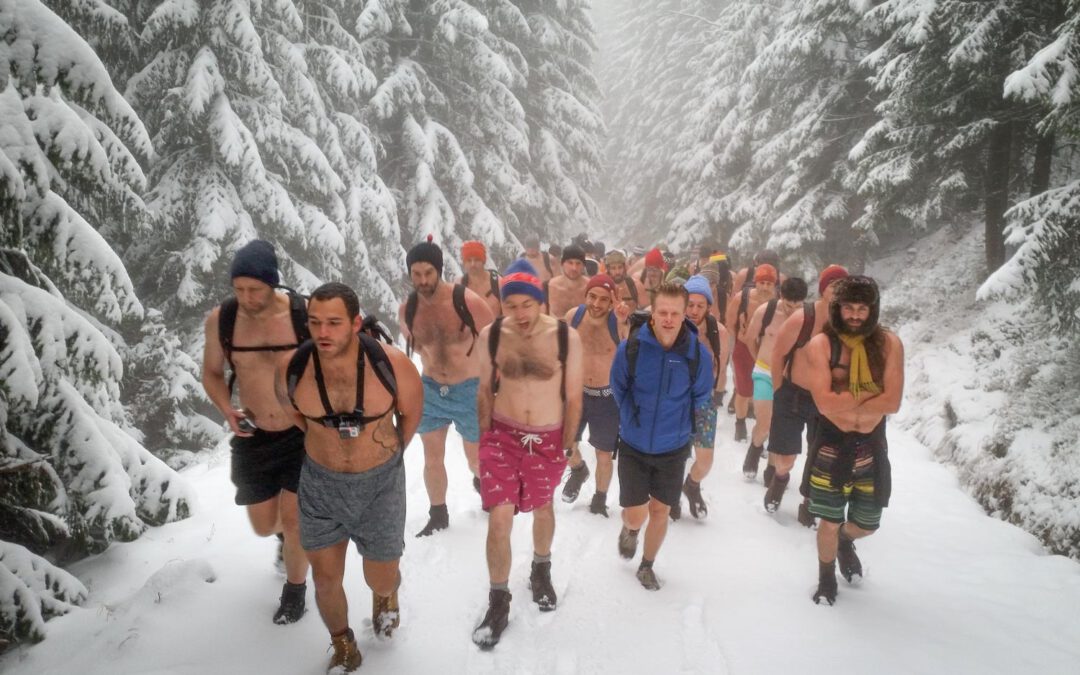
5 days 'inner fire'
Ice training with Wim Hof in Poland
< 1 Min.Sixty people from all over the world, including me, learn the fascinating effects of breathing, body exercises and ice baths in 5 days. Highlight: We boot up the Sniezka in shorts. My video summarises the experience.

